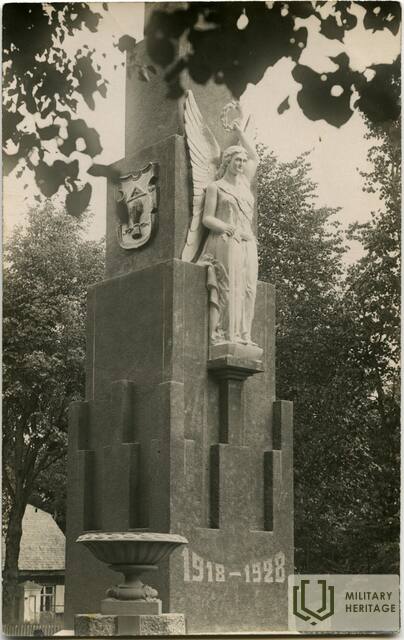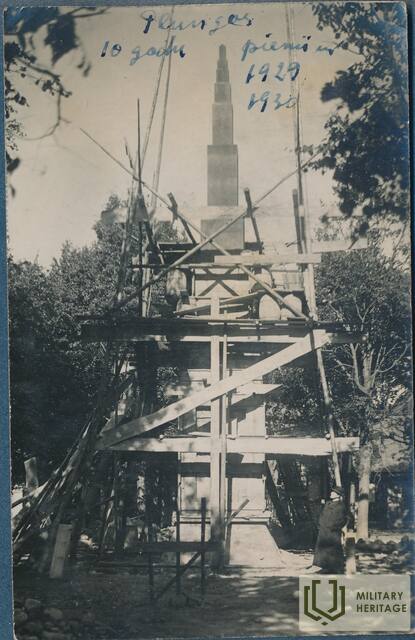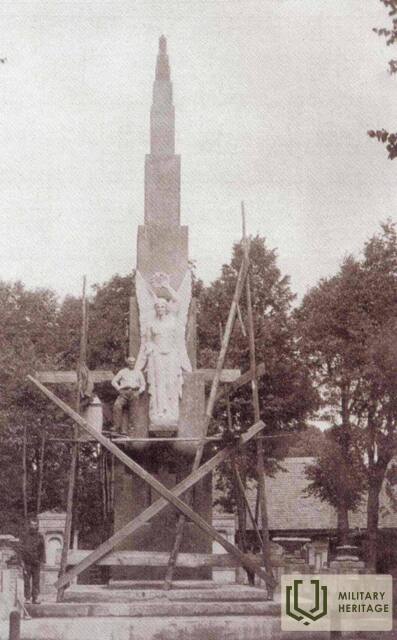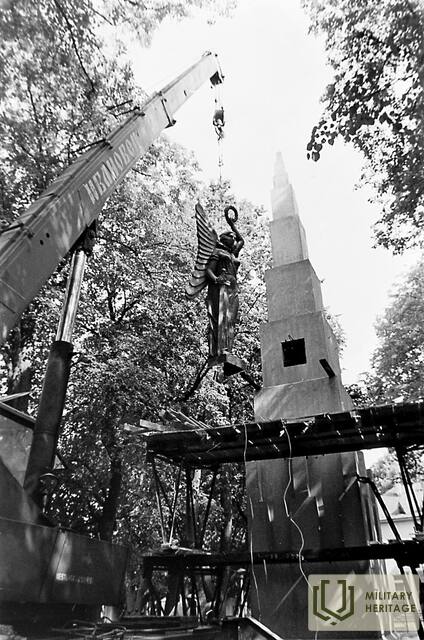The Scandalous Freedom Monument
The Freedom Monument, built in Plungė in the late 1920s, caused a scandal in the religious community due to the figure of a naked woman, which was supposed to symbolize Freedom, but became the subject of endless controversy - both on ethical and quality issues.
A white, plaster, 3-meter-tall sculpture of a winged woman with a sword and a wreath in her hands stood on an 18-meter-tall pedestal, and in 1932, Dienos Naujienes wrote: "Last autumn, the construction of an 18-meter-tall independence monument was partially completed: (perhaps due to its excessive height, it tilted to one side). [...] At one time, this monument caused a lot of controversy, because the statue depicted a naked woman. Due to opposition from right-wing organizations, the statue was covered with clothes."
The newspaper “Žemaičių prietelius” reported in 1932 that the monument cost about 8,000 litas, but this did not protect it from construction defects. “When the autumn weather set in, the arm of Freedom with the sword fell. After a while, all the coats of arms fell off,” wrote “Dienos Naujienos”.
As it turned out from the 1931 report of the "Žemaitis" newspaper, the monument was created by the self-taught master Kleinauskis, whom the people of Rietavas, and later the people of Plungė, chose because of its low price. "The Rietavas monument suffered the same fate, because the same self-taught artist worked on the artwork," wrote the press of the time.
The coats of arms of Vytautas the Great, Samogitia and Plungė were placed on the sides of the monument. "Friends of Samogitia" (1932) mentions that there was also a sign of Vytautas the Great, looking at the monument from the Babrungas Valley side.
It is said that President Antanas Smetona, while visiting Plungė, quickly turned around and walked to the statue of St. Florian. In 1936, the controversial Statue of Liberty was removed, and during the Soviet era, the monument was completely demolished. In 1992, the monument was restored.
Related timeline
Related objects
Freedom Monument in Plungė
In around 1928, on the occasion of the tenth anniversary of the proclamation of the independence of the Republic of Lithuania, the construction of the Freedom Monument was started in Plungė, on Laisvės Avenue, with the monument built in accordance with the design by the artist Kleinauskas. The project was completed in 1931 and was recognised as the highest (18 m) Freedom Monument in Žemaitija.
The idea of the monument did not satisfy the Catholic community of the city, who felt that the main figure of the monument – a plaster sculpture of a winged angel holding a sword and a crown – looked too vulgar and bare. Therefore, the original idea of erecting the Freedom Monument in front of the church was rejected and it was installed on Laisvės Avenue. There is a story that the sculpture has been stoned by the townspeople. The city authorities did not like the monument either – Independence Day celebrations were held at the statue of St Florian, ignoring the Freedom Monument.
Finally, in around 1936, the ruined sculpture was dismantled, and in around 1950–1953, the Soviet occupation authorities blew up the remains of the monument in order to combat the expression of freedom ideas. In 1992, the monument was restored and consecrated. The new sculpture and coat of arms were cast in bronze. The author of the restored monument is sculptor Vilimas Ketvirtis. The sculpture of the angel was cast in St Petersburg, while the coats of arms of Plungė – in Kaunas.










